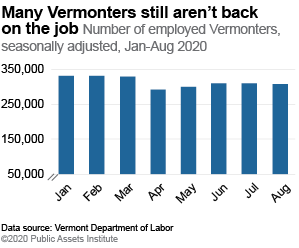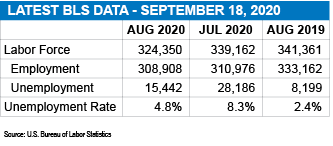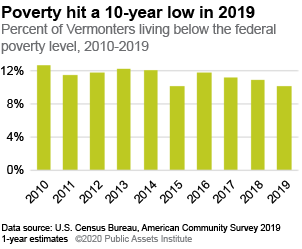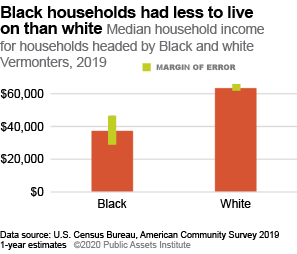NEW REPORT:
Migration: Millennials and the wealthy moved in. Most Vermonters stay put
Read the report
Read the report
 The number of Vermonters who are working dropped by more than 2,000 in August, after recovering some over the summer. At 308,000, that’s more than 20,000 below pre-pandemic levels. And while 30,000 Vermonters are still applying for unemployment benefits, many of them are not included in the official federal unemployment rate. That rate is based on a narrow definition of unemployment that does not accurately reflect people who are still unable to work or look for work because of the pandemic.
The number of Vermonters who are working dropped by more than 2,000 in August, after recovering some over the summer. At 308,000, that’s more than 20,000 below pre-pandemic levels. And while 30,000 Vermonters are still applying for unemployment benefits, many of them are not included in the official federal unemployment rate. That rate is based on a narrow definition of unemployment that does not accurately reflect people who are still unable to work or look for work because of the pandemic.
 Falling poverty
Falling poverty
Before the 2020 pandemic-driven recession began in February, poverty in Vermont declined for the third year in a row in 2019, reaching its lowest level of the recovery period following the Great Recession. According to new data released by the Census Bureau this week, nearly 61,000 Vermonters lived in poverty in 2019, a decline of more than 5,000 from the year before. Poverty rates in Vermont remained in the middle of the pack compared with the rest of the country and New England.
Black households
The latest Census data show that the typical Black household in Vermont had $26,000 less income than the typical white household. Although there are large margins of errors due to the small number of households headed by Black people in Vermont, the gap has persisted over the 13 years that data have been collected. Overall Vermont median household income rose in 2019 to its highest point in the last 15 years, but it has grown far more slowly than the economy as a whole.
Comment Policy
We welcome and publish non-partisan contributions from all points of view provided they are of a reasonable length, pertain to the issues of Public Assets Institute, and abide by the common rules of online etiquette (i.e., avoid inappropriate language and “SCREAMING” (writing in all caps), and demonstrate respect for others).